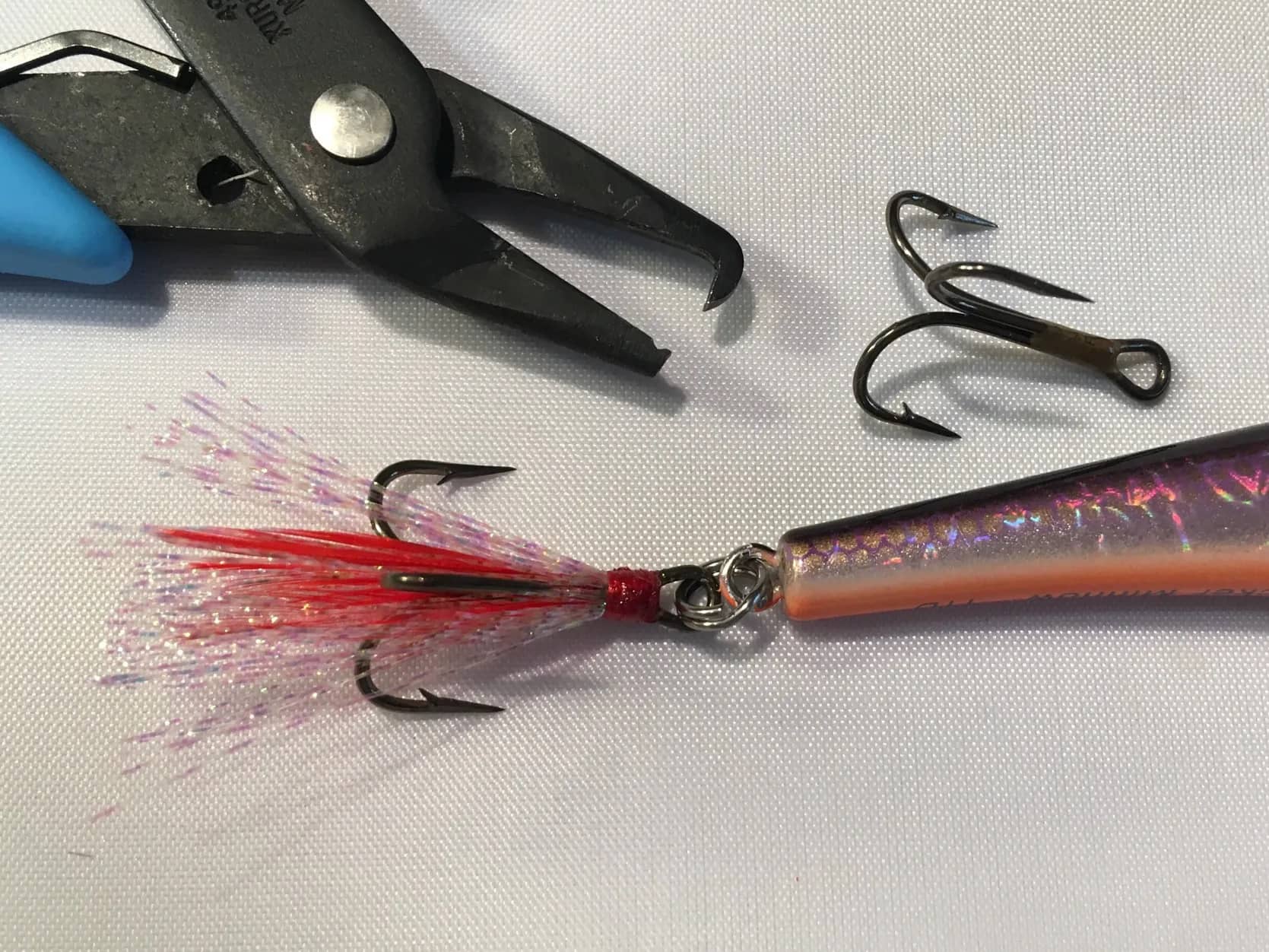
Go small. Invest in a high-quality split ring plier to quickly assemble lures at the desk or to adjust and repair them in a pinch on the water. Simonson Photo.
By Nick Simonson
In the blur of March and April when missions at the lure-crafting table and forays on the water begin to meld together, in addition to now wondering where my cheaters are (often on top of my head) I find myself flipping back and forth in the pages of my memory to locate vital tools that pull double duty in both locations.
From handling the tasks at hand on the hardwood of the desk to dealing with in-the-moment upgrades and field surgery in the boat or on shore, there are tools I hate to be without. Here are three that easily make the jump between winter indoor crafting and outdoor adventures starting in spring.
Splitsville
A split ring pliers makes assembly a breeze for in-line spinners of any size, from foot-long leviathan slayers for muskies and pike to smaller versions for stream trout. Its tiny-pointed jaw is effortlessly inserted into the round rings that connect treble hooks to the weighted bodies and wire shafts, making short work of the assembly process. Additionally, they link hooks to other lures such as painted spoons and airbrushed crankbaits, putting the exclamation point on a perfect creation at the desk.
In the boat or on the shore, replacing factory issued trebles on baits with a preferred or pre-sharpened model or switching to a different hook to match regulations on a traveled-to stream is just as easy when a split ring pliers is within reach. Invest in a high-quality pliers with a narrow beak and a tiny ring-opening point to make both the lure making process and modifications in the moment more efficient. The extra ten dollars is worth it.
Make the Cut
One truth about making those big fish lures for muskies and pike is that they can require some serious elbow grease. The twisting and bending of wire calls for a good grip and can be aided by a vise and even a special wire-forming tool capable of wrapping the shaft around itself to cap off the offering.
As a result, finishing a lure by trimming the wire after creating a tie-in point necessitates some heavy-duty snippers. No matter what model is employed, a tin snip, wire cutter or side cutter helps finish off those big fish lures at the crafting table with relative ease.
On the water, another harsh reality is that the hooks on those big fish baits and even standard offerings for bass and walleyes can end up in some tight spaces making extraction from toothy jaws difficult. To aid in a faster release, having a snipper at hand that can cut through trebles (even big ones up to 7/0) will help get a fish back in the water quickly, limiting exposure to the air and added stress and aiding survival. With a snipper and the aforementioned split ring plier, simply replace the hook and get back to casting. I’ve even utilized a wire cutter to trim bottom bouncers, secure Krippled Herring rigs on downriggers, and cut and reset battery wires on trolling motors.
Light It Up
Finally, perhaps the most unsung hero on any tying desk is the humble butane lighter.
From melting the ends of microchenille to form small offerings like the San Juan worm or extended body dry flies such as mayfly and damselfly patterns for trout, to securing treble hooks in a horizontal position on an in-line spinner via a rubber heat shrink wrap, a little fire goes a long way. It even melts monofilament in such a manner that a skilled fly tyer can create eyes for shrimp and crayfish patterns.
In the boat or on shore, that same flame makes short work of superline when a scissors or knife isn’t handy and the same heat shrink tubing can be secured on any number of wire connections in the boat, or for a quick fix of a broken rod tip with a replacement. In the end, if an emergency occurred, an angler with a small Bic in his or her vest or tacklebox has at least one reassuring fire-starting source on hand.
These three lure making tools are also vital additions to the tacklebox when on the water. Investment in them for tackle crafting also pays off in a pinch when a big fish needs a quick release, or some jury-rigging is required to get things ship shape from the end of the rod to the bow of the boat.
